Choosing the right dog involves understanding their trainability, a key factor for a smooth human-pet relationship. Trainability reflects a dog's ability to learn, adapt, and obey, crucial for active families or specific roles. This article explores the top 10 trainable breeds, from the agile Border Collie to the loyal Labrador Retriever, highlighting their unique qualities and how they fit into various lifestyles.
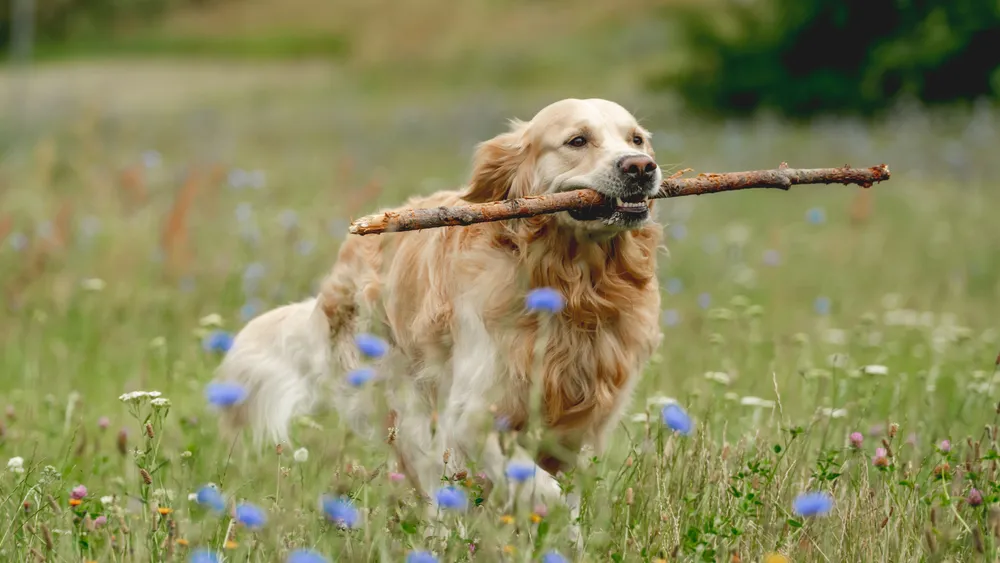
Understanding Dog Trainability
Trainability in dogs is more than just obeying commands; it's about a breed's ability to learn, communicate, and adapt. This ability is shaped by both genetics and the dog's environment. Certain breeds, like Border Collies and German Shepherds, are inherently predisposed to be more trainable due to their historical roles that required high intelligence and responsiveness.
Genetic Influence
A dog's genetic makeup significantly impacts its learning capacity and temperament. Breeds with a history of tasks requiring cooperation and intelligence typically exhibit greater trainability.
Environmental Impact
The setting in which a dog is raised plays a crucial role in its development. Positive reinforcement, diverse experiences, and consistent training can significantly enhance a dog's ability to learn and adapt.
Importance of Early Socialization and Consistency
Introducing puppies to a variety of situations and maintaining consistent training from an early age are key to developing a trainable dog. This foundation not only facilitates learning but also helps in molding a well-adjusted and responsive companion.
While genetics lay the foundation for a dog's trainability, environmental factors and early training experiences are pivotal in shaping their learning abilities. As we explore the top 10 most trainable breeds, remember that with the right approach, nearly any dog can become a willing and able learner.
The Top 10 Most Trainable Dog Breeds
In this section, we explore the top 10 dog breeds renowned for their trainability. Each breed is unique, with a rich history and distinct traits that contribute to its learning capabilities and responsiveness to training.
Breed #1: Border Collie
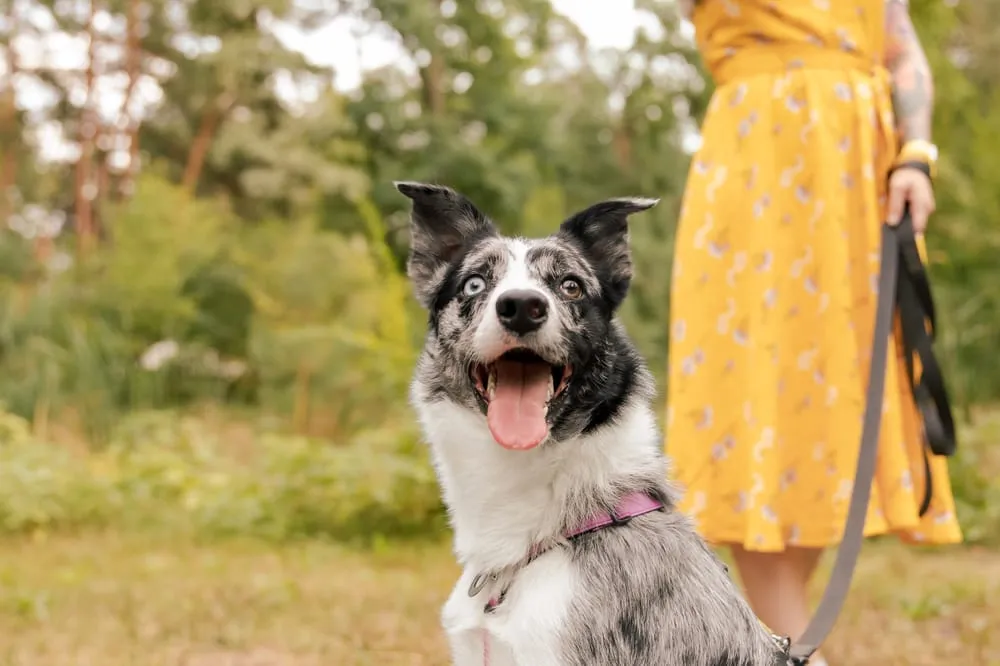
Overview and History
- Originating from the Anglo-Scottish border region, Border Collies are known for their intelligence and herding prowess. Bred for their agility, stamina, and working ability, they have a rich history as sheepherders, capable of handling complex tasks.
Key Physical and Personality Traits
- Medium-sized with a double coat, known for their intense gaze, or "eye," used to control sheep. They are energetic, intelligent, and highly responsive, with a strong desire to please.
Trainability and Temperament
- Border Collies excel in obedience due to their exceptional intelligence and eagerness to learn. They thrive on mental and physical challenges, making them ideal for advanced training disciplines like agility, flyball, and obedience competitions.
Breed #2: Poodle
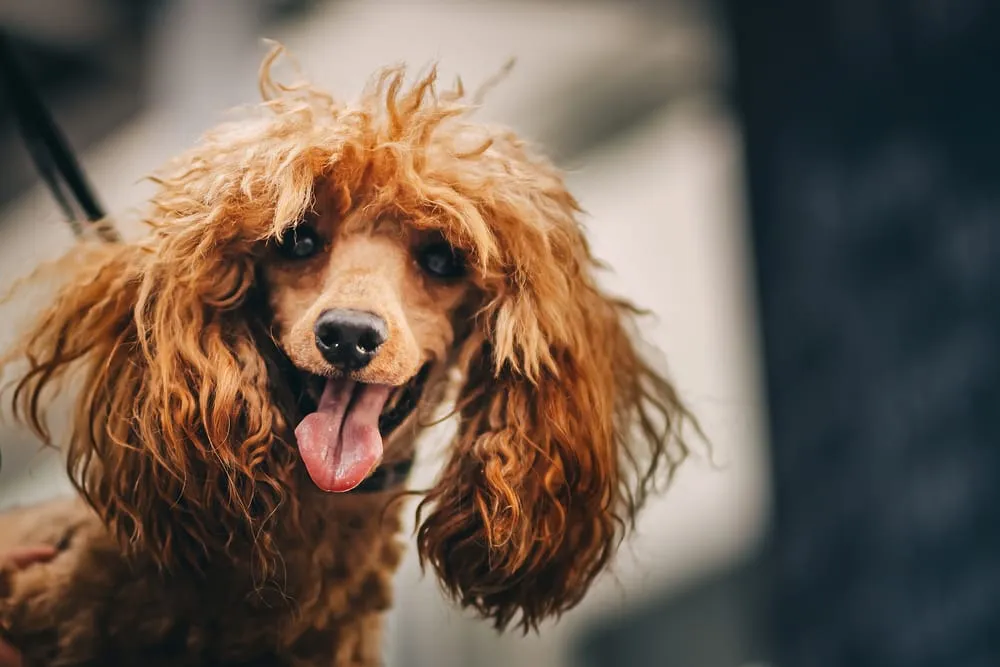
Overview and History
- Poodles, originally bred as water retrievers in Germany, are known for their distinctive curly coats and keen intelligence. They come in three sizes (standard, miniature, and toy) but share the same breed characteristics.
Key Physical and Personality Traits
- Elegant and athletic, Poodles carry themselves with dignity. Beyond their stylish appearance, they are smart, alert, and active, with a playful side.
Trainability and Temperament
- Their intelligence and loyalty make Poodles highly trainable. They excel in obedience training and enjoy mental stimulation, making them suitable for various dog sports and activities.
Breed #3: German Shepherd

Overview and History
- German Shepherds were originally bred in Germany for herding and guarding sheep. Known for their intelligence, strength, and obedience, they quickly became a favorite for various service roles, including police and military work.
Key Physical and Personality Traits
- They are large, muscular dogs with a distinctive black and tan coat. German Shepherds are known for their courage, confidence, and keen sense of duty. They are loyal, protective, and versatile in their abilities.
Trainability and Temperament
- German Shepherds are highly trainable, known for their quick learning and ability to perform a wide range of tasks. Their intelligence and desire to work closely with their handlers make them excellent candidates for obedience, search and rescue, and assistance dog training.
Breed #4: Golden Retriever

Overview and History
- Originating from Scotland in the late 1800s, Golden Retrievers were bred as gun dogs to retrieve shot waterfowl during hunting and shooting parties. They are well-regarded for their friendly, tolerant attitude.
Key Physical and Personality Traits
- Golden Retrievers have a dense, water-repellant outer coat with a thick undercoat. They are known for their friendly, gentle, and outgoing temperament. They are trustworthy, well-behaved, and eager to please.
Trainability and Temperament
- Their intelligence, patience, and eagerness to please make training a rewarding experience. They excel in obedience, agility, and therapeutic work, making them versatile in both competitive and assistance roles.
Breed #5: Labrador Retriever
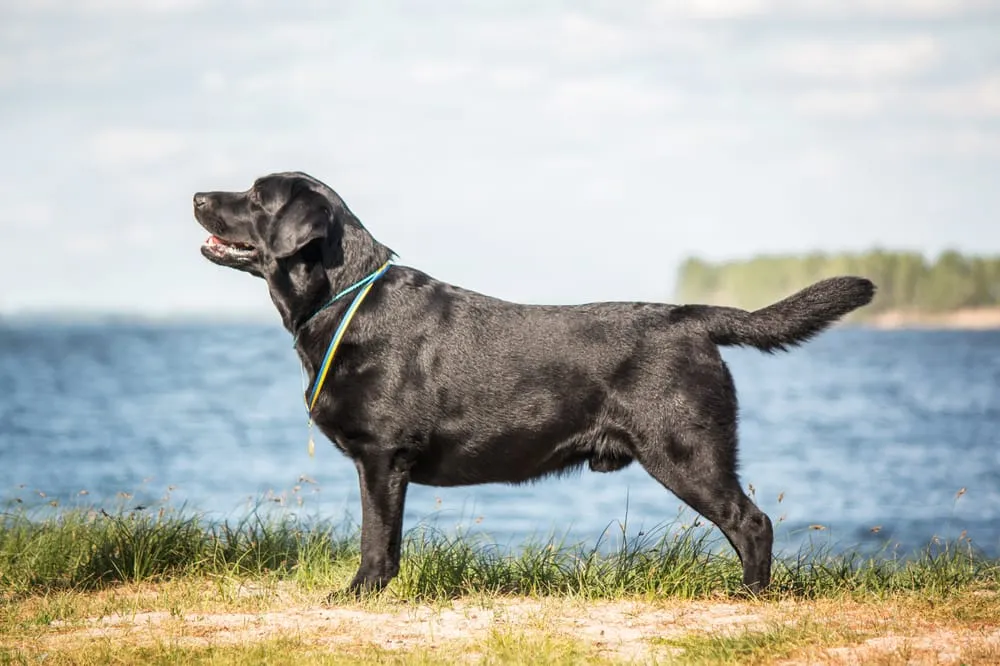
Overview and History
- Originating from Newfoundland, Labrador Retrievers were initially used by fishermen to help retrieve fishing nets and fish that had escaped hooks. They are now one of the most popular breeds in the United States.
Key Physical and Personality Traits
- Labradors are sturdy, medium to large-sized dogs known for their kindness, friendliness, and outgoing nature. They have a short, dense, water-resistant coat and are known for their "otter" tail and kind eyes.
Trainability and Temperament
- Labradors are eager to please, making them excellent companions and service dogs. They are well-suited for a variety of activities including hunting, search and rescue, and therapy work, thanks to their trainable nature and love of work.
Breed #6: Doberman Pinscher
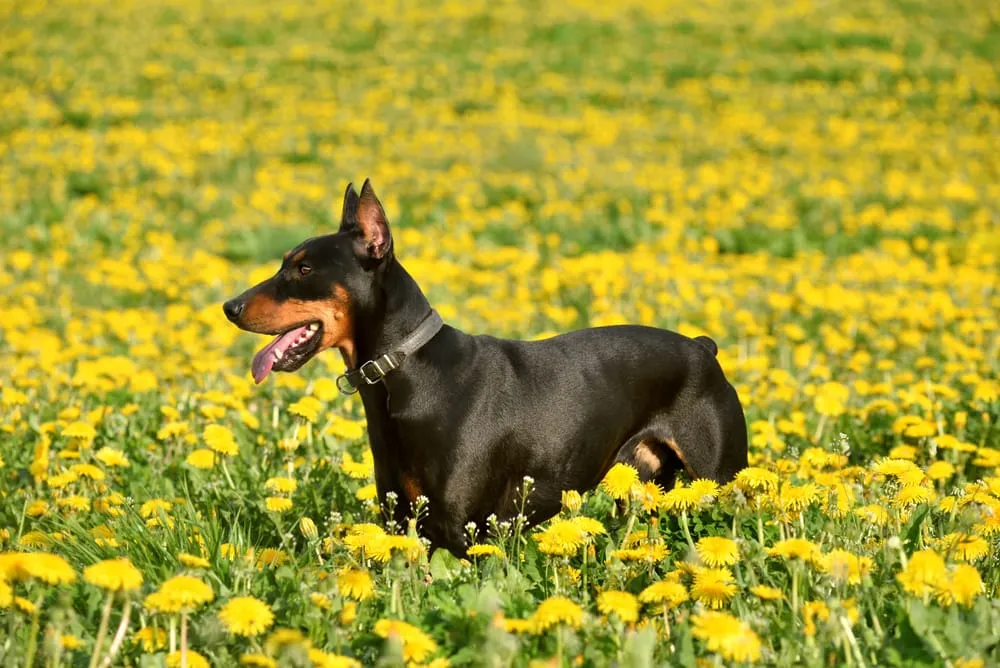
Overview and History
- Developed in Germany by Karl Friedrich Louis Dobermann, this breed was intended for protection. Dobermans are known for their loyalty, intelligence, and strength, making them excellent guard dogs.
Key Physical and Personality Traits
- Sleek and powerful, with a muscular build, Dobermans carry an aura of nobility. They are alert, fearless, and loyal, showing a deep attachment to their owners.
Trainability and Temperament
- Dobermans are highly trainable, known for their sharp intelligence and eagerness to please. They respond well to firm, consistent training and excel in obedience, tracking, and agility.
Breed #7: Shetland Sheepdog

Overview and History
- Originating from the Shetland Islands, these dogs were bred for herding and are closely related to Rough Collies. They are known for their intelligence, agility, and obedience.
Key Physical and Personality Traits
- Small to medium in size, Shelties have a long, lush coat and a fox-like expression. They are lively, intelligent, and affectionate, known for their vocal nature.
Trainability and Temperament
- Shelties are highly trainable, with a keen ability to learn quickly and perform tasks with enthusiasm. They excel in obedience, agility, and herding trials, thriving on mental stimulation and interaction.
Breed #8: Papillon
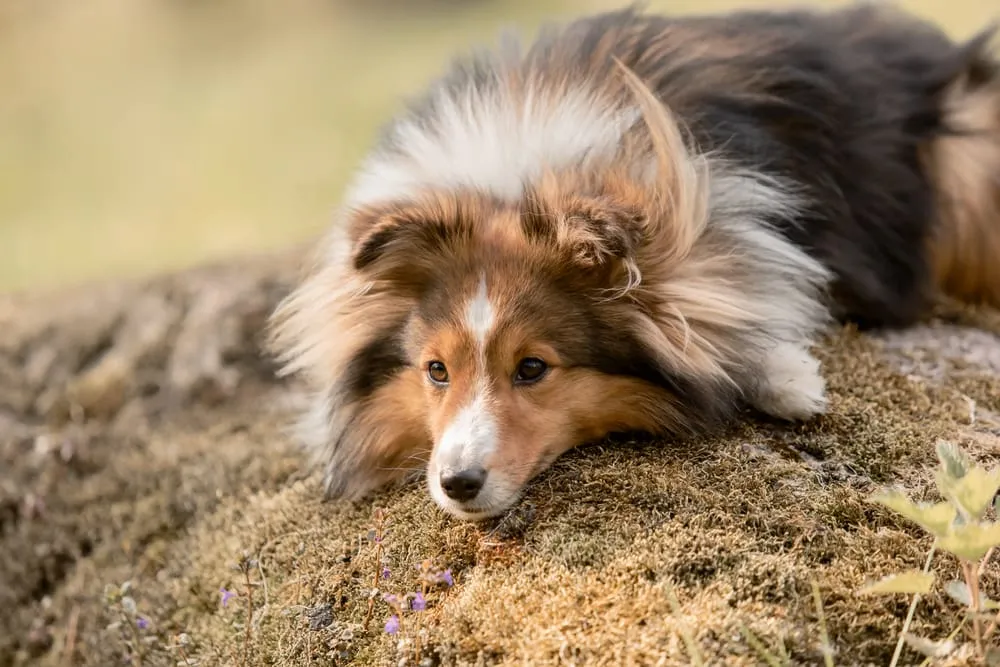
Overview and History
- Named for their distinctive butterfly-like ears, Papillons are one of the oldest toy spaniel breeds. They were favored by royalty and are depicted in historic paintings across Europe.
Key Physical and Personality Traits
- Small but sturdy, with a plumed tail and large, winged ears. Papillons are known for their lively and friendly disposition, blending elegance with a playful spirit.
Trainability and Temperament
- Despite their small size, Papillons have a big heart for learning. They are quick-witted and responsive, excelling in obedience and agility due to their high intelligence and desire to please.
Breed #9: Rottweiler
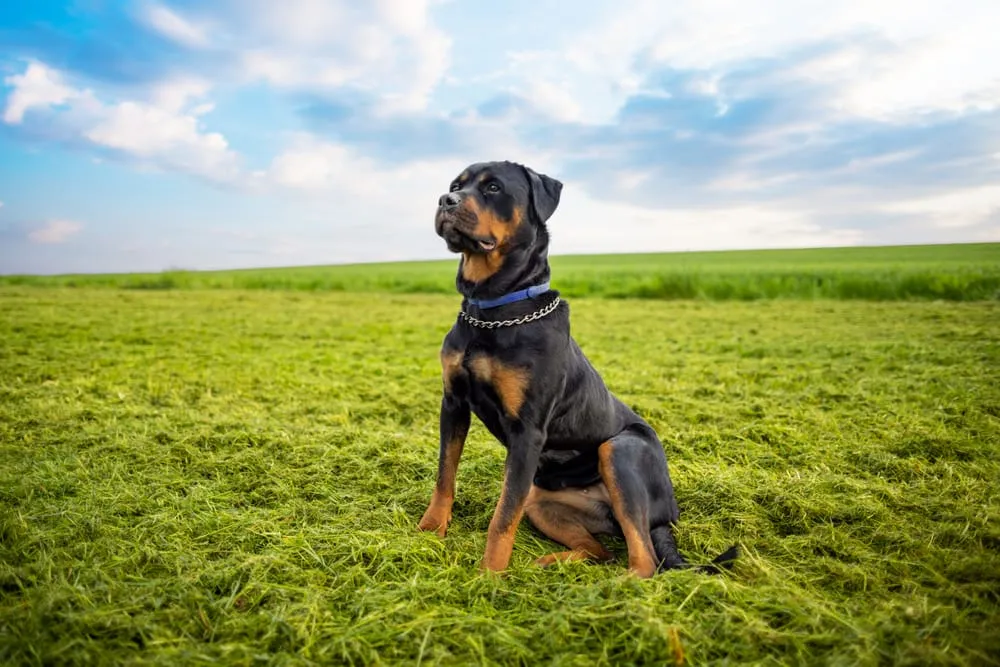
Overview and History
- Originating from Germany, Rottweilers were initially used to drive cattle and pull carts. They are known for their strength, endurance, and protective instincts.
Key Physical and Personality Traits
- Robust and powerful, Rottweilers have a calm and confident demeanor. They are deeply loyal, courageous, and have a natural guarding instinct.
Trainability and Temperament
- Rottweilers are highly trainable, responding well to firm, consistent leadership. They excel in obedience, tracking, and protection work, requiring regular mental and physical stimulation.
Breed #10: Australian Shepherd
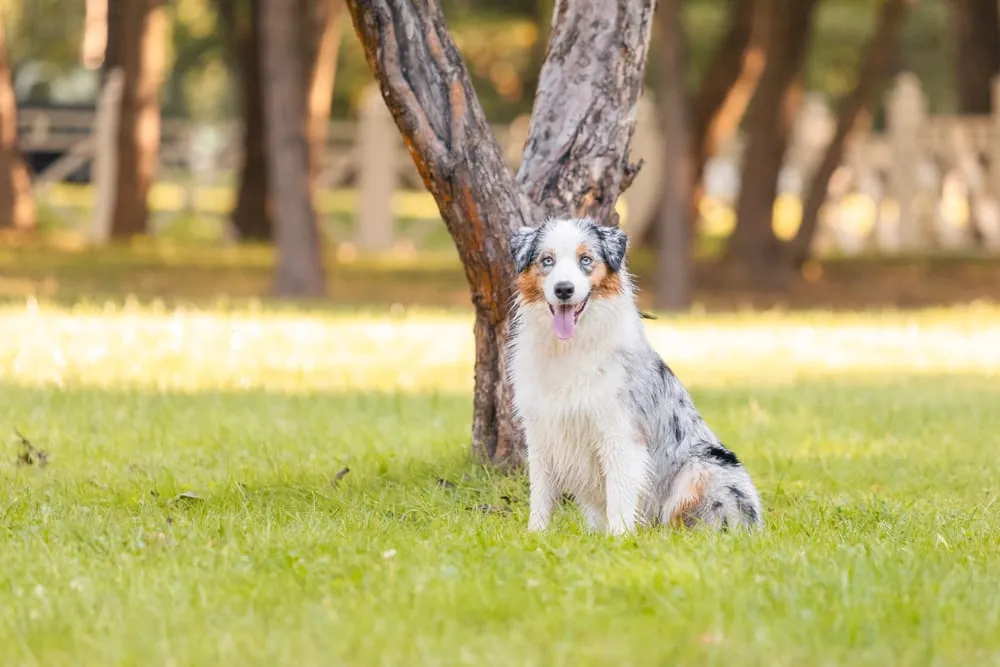
Overview and History
- Despite their name, Australian Shepherds were developed in the United States. They were bred for herding livestock and are known for their versatility and intelligence.
Key Physical and Personality Traits
- Medium-sized with a distinctive coat and eye colors, Aussies are agile, strong, and have a keen, alert expression. They are energetic, intelligent, and eager to accomplish tasks.
Trainability and Temperament
- Australian Shepherds are highly trainable, thriving on challenging activities and learning opportunities. They excel in obedience, agility, and herding, requiring an active lifestyle and engaged training.
Each breed highlighted here stands out for its trainability, shaped by a unique combination of history, physical traits, and temperament. When trained with understanding and consistency, these breeds not only excel in their tasks but also form deep, rewarding relationships with their owners.
Training Tips for Highly Trainable Breeds
Training a highly trainable dog breed can be a rewarding experience. These breeds often show a keen ability to learn and a desire to please, making the training process smoother and often more successful. Here are some general training tips that apply to the most trainable breeds:
Start Early and Be Consistent
Begin training as early as possible, ideally during puppyhood, when dogs are most impressionable. Consistency is key—use the same commands and rewards to reinforce learning.
Positive Reinforcement
Highly trainable breeds respond well to positive reinforcement. Use treats, praise, and play as rewards for good behavior. This not only makes training enjoyable but also strengthens the bond between you and your dog.
Patience is Crucial
Even the most trainable breeds can have off days. Patience is vital in dog training. If a session isn't going well, take a break and try again later. Remember, training is a marathon, not a sprint.
Socialization
Expose your dog to different people, animals, environments, and situations. Socialization is a critical aspect of training, helping to ensure your dog is well-adjusted and confident in various scenarios.
Mental Stimulation
Highly trainable breeds often have high intelligence and energy levels. Incorporate mental stimulation into their training routine with puzzle toys, obedience games, and training challenges to keep them engaged and prevent boredom.
Addressing Common Training Challenges
Even with trainable breeds, you may encounter challenges like stubbornness, distractibility, or over-excitement. Address these by adjusting your training methods, using higher-value rewards, and ensuring your dog gets enough physical exercise to burn off excess energy.
Professional Guidance
Don't hesitate to seek professional help if you encounter persistent training challenges. A professional dog trainer can offer personalized advice and strategies tailored to your dog's needs.
Remember, the goal of training is to foster a happy, healthy relationship between you and your dog. By understanding and applying these training tips, you can make the most of your dog's natural trainability, leading to a rewarding and fulfilling companionship.
Beyond Trainability: Other Factors to Consider
While trainability is a significant factor in choosing a dog breed, it's essential to consider other aspects to ensure a harmonious match between you and your future canine companion. A dog's energy level, temperament, and your lifestyle, along with the support systems available for training, all play pivotal roles in this decision-making process.
Matching a Dog's Energy Level and Temperament with Your Lifestyle
- A dog's energy level should complement your lifestyle. High-energy breeds, like Border Collies or Australian Shepherds, thrive in active households and require ample exercise and mental stimulation. Conversely, less active breeds may be better suited for more relaxed living environments.
- Temperament is equally important. Consider whether you prefer a dog that's more independent or one that's highly sociable and demands more attention. Assess your living situation, work schedule, and social life to find a breed whose temperament aligns with your lifestyle.
Considerations for First-Time Dog Owners
- First-time dog owners should look for breeds known for their manageability, adaptability, and forgiving nature. While trainable breeds are appealing, it's crucial to consider the overall maintenance, including grooming needs, health issues, and the breed's typical behavior.
- Start with breeds that are known to be good "beginner" dogs and consider your ability to meet their exercise, training, and companionship needs.
The Role of Professional Trainers and Obedience Classes
- Professional trainers and obedience classes can be invaluable, especially for first-time owners. They provide structured learning environments and can help address specific training challenges and behavioral issues.
- Obedience classes also offer socialization opportunities with other dogs and people, which is beneficial for your dog's development.
- Professional guidance can help you understand and apply effective training techniques, ensuring that you and your dog have a strong foundation for a healthy relationship.
In summary, while the trainability of a dog breed is a crucial factor to consider, it's equally important to assess other aspects such as energy level, temperament, and your lifestyle to ensure a compatible match. Additionally, leveraging the expertise of professional trainers and enrolling in obedience classes can significantly enhance the training experience and outcome for both you and your dog.
Section 5: How to Choose the Right Breed for You
Choosing the right dog breed involves a careful assessment of your lifestyle, available time, and training abilities. It's a decision that will affect both your life and the life of your dog for many years to come. Here's how to make an informed choice:
Assessing Your Lifestyle and Commitment
- Reflect on your daily routine and consider how a dog fits into your life. Are you active and outdoorsy, or do you prefer a quieter, more indoor lifestyle? Your new canine companion should ideally match your energy level and preferred activities.
- Consider your living situation. Do you have a spacious home with a yard, or do you live in a smaller, pet-friendly apartment? Some breeds adapt well to apartment living, while others need more space to roam and play.
- Time commitment is crucial. Dogs require time for training, exercise, grooming, and companionship. Ensure you can dedicate the necessary time to meet the needs of your chosen breed.
Choosing Between Breeders and Rescue
- If you decide to go through a breeder, research to find reputable ones who prioritize the health, temperament, and well-being of their dogs. Reputable breeders should be transparent about their breeding practices and provide health clearances for the puppies' parents.
- Alternatively, consider adopting from a shelter or rescue organization. Many rescue dogs are eager for a second chance and can make wonderful, loyal pets. Adoption also offers the opportunity to provide a home to a dog in need, and many shelters have purebred or mixed breed dogs with the traits you're looking for.
Resources for Further Research
- Utilize breed-specific clubs and organizations for in-depth information about particular breeds. These can offer insights into a breed's characteristics, health issues, and care requirements.
- Websites like the American Kennel Club (AKC) provide comprehensive guides on various breeds, including their history, personality, and care needs.
- Visit local dog shows or events to meet different breeds and speak with owners and breeders. This firsthand experience can be invaluable in understanding what owning a particular breed might entail.
- Consider consulting with a veterinarian or a professional dog trainer, who can offer personalized advice based on their experience with different breeds and knowledge of your specific situation.
Choosing the right dog breed involves a thoughtful examination of your lifestyle, the level of commitment you can offer, and where you choose to get your dog from. By using reputable resources, engaging with the dog community, and possibly seeking professional advice, you can make an informed decision that ensures a happy and harmonious life with your new furry friend.
Conclusion
In exploring the top 10 most trainable dog breeds, we've delved into a world where intelligence, obedience, and adaptability shine through. From the focused and agile Border Collie to the versatile and eager-to-please Labrador Retriever, each breed brings its unique blend of traits that make them standouts in the realm of trainability. These breeds not only excel in learning commands and performing tasks but also thrive in environments where their mental and physical capabilities are fully engaged.
However, it's crucial to remember that trainability is just one of many factors to consider when choosing the right dog for your life. A breed's energy level, temperament, and compatibility with your lifestyle are equally important. The decision should be informed by a holistic view of your own life, the commitment you're willing to make, and the environment you can provide for your new companion.
The journey of training and bonding with your dog is one of the most rewarding experiences a pet owner can have. It's about more than teaching commands; it's about fostering a deep, understanding relationship between you and your dog. The process of training opens up lines of communication and builds trust, leading to a harmonious and fulfilling life together.
As you consider adding a furry member to your family, let the insights into these trainable breeds guide you, but also listen to your heart and circumstances. The right dog for you is one that not only fits your lifestyle but also connects with you on a personal level. Whether you choose one of the highly trainable breeds mentioned or another breed altogether, the bond you'll form through training and shared experiences will be the ultimate reward.
FAQs
- What makes a dog breed "trainable"?
- Trainability in dogs refers to their ability to learn and respond to commands and training. Factors include intelligence, eagerness to please, and responsiveness to human cues.
- Which dog breed is considered the most trainable?
- While several breeds are known for their trainability, Border Collies are often cited as the most trainable due to their intelligence and work ethic.
- Are trainable dog breeds good for first-time owners?
- Many trainable breeds can be great for first-time owners, especially those willing to invest time in training and exercise. Breeds like Labrador Retrievers and Golden Retrievers are known for their adaptability and friendly nature.
- Do highly trainable dog breeds require more exercise?
- Highly trainable breeds, especially working dogs, often have high energy levels and require regular physical and mental exercise to stay happy and healthy.
- Can any dog breed be trained?
- Yes, dogs of any breed can be trained, but the ease and speed of training can vary significantly between breeds due to differences in intelligence, temperament, and motivation.
- Are smaller dog breeds less trainable than larger ones?
- Trainability is not directly related to size. Smaller breeds can be just as trainable as larger ones, although their training may focus on different skills.
- What is positive reinforcement, and why is it important in dog training?
- Positive reinforcement involves rewarding desirable behaviors to encourage their repetition. It's crucial in dog training because it fosters a positive relationship and makes learning enjoyable for the dog.
- How long does it take to train a dog from one of the most trainable breeds?
- The time it takes to train a dog varies widely depending on the specific tasks and the individual dog. Basic obedience training can take a few weeks, but advanced training or specific skills may take much longer.
- Is it better to adopt a dog from a breeder or a rescue when looking for a trainable breed?
- Both breeders and rescues can be good sources for trainable dogs. Reputable breeders can provide breed-specific insights, while rescues can offer dogs that may already have some training and are in need of a home.
- Can older dogs from trainable breeds still learn new commands and tricks?
- Yes, older dogs can learn new commands and tricks. While it may take them slightly longer than a puppy, dogs of any age can benefit from the mental stimulation and bonding experience of training.




